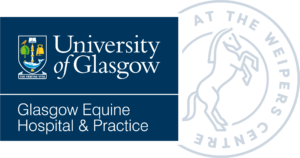Glasgow Equine Hospital are BHS Vet REACT colic champions
Glasgow Equine Hospital is one of many veterinary practices across the UK who have become Vet REACT Colic Champions, in a new scheme coordinated by The British Horse Society and The School of Veterinary Medicine and Science, University of Nottingham.
Here at Glasgow Equine Hospital, we will be working closely with both organisations to share information and advice from the REACT colic campaign on how to recognise and react to signs of colic as quickly as possible to give your horse the best chance of recovering.
Colic is the most common veterinary emergency in the horse. Most cases are mild and can be resolved with simple treatment, but a small percentage are critical or life-threatening. These critical cases will need rapid decision-making by both the vet and owner.
The REACT colic campaign includes a poster of the most common signs of colic, and ten fact sheets on colic ‘essentials’ (also available as downloadable PDFs).
The REACT campaign provides essential information to help you understand the different causes of colic, how to recognise colic early, and how to plan to make sure you give your horse the best chance of recovering.
1. What is colic?
2. Recognising signs of colic
3. Reducing the risk of colic
4. Emergency decision-making
5. How to take a horse’s temperature, pulse and breathing rate
6. Waiting for the vet to arrive
7. The vet’s examination of the horse
8. Rectal examination
9. Nasogastric intubation
10. What happens at referral?
Over the next year, we will be holding at least two talks on the key REACT messages and will also be sharing information through our website and Facebook page. Free REACT packs and guides will be available in our reception areas and also available at our client evenings. Please keep an eye on our Facebook page and website for details of the talks.
Information Leaflets
The information below discusses the wide range of issues related to colic and has been produced from the evidence, recommendations and involvement of veterinary surgeons, horse owners and original research conducted by The University of Nottingham.
Please note some leaflets contain surgical photos.


